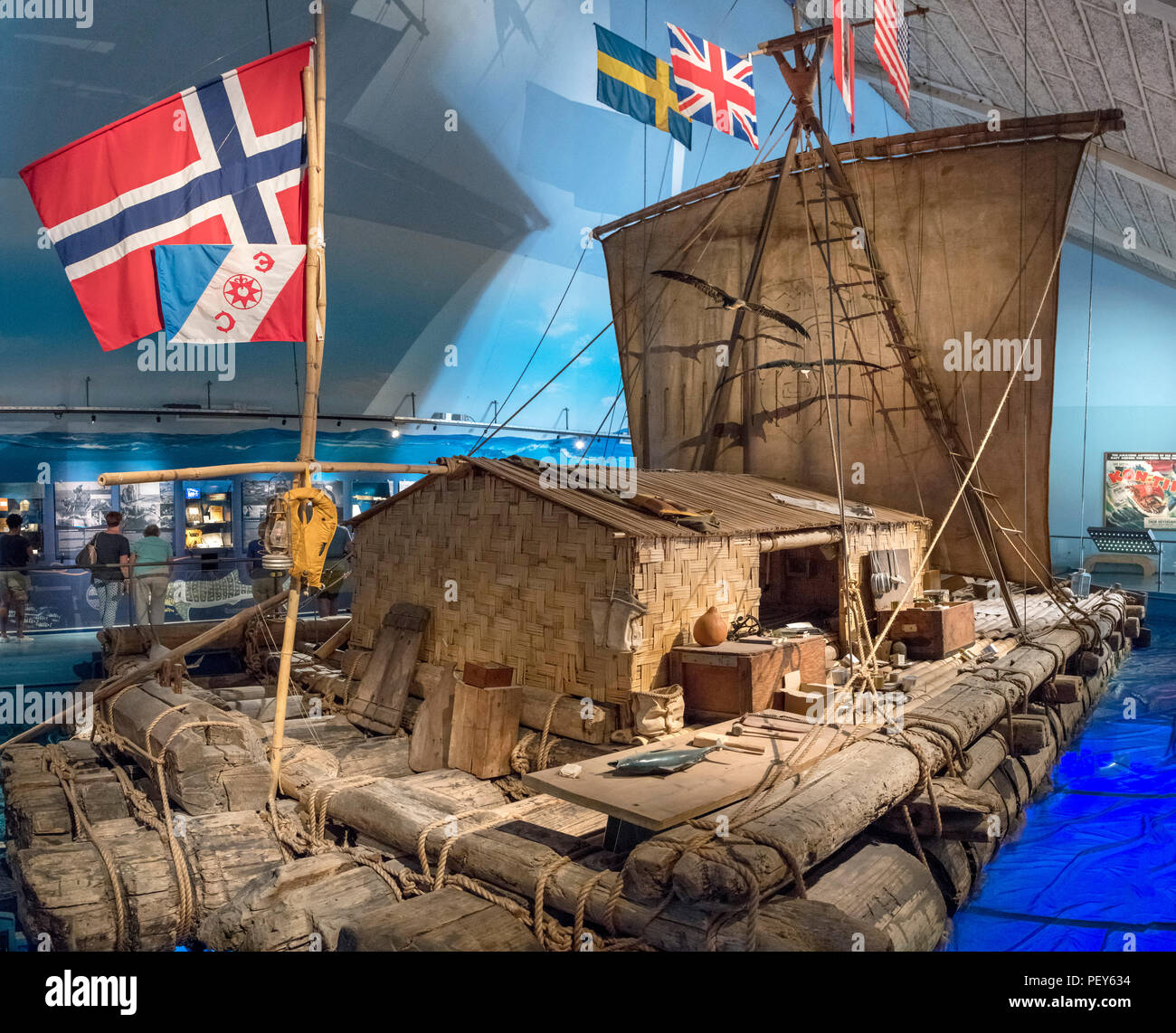


Unlike a traditional displacement-hulled boat, waves that crashed onboard were not captured by a hull at all (which always increases the risk of foundering), but rather, just passed harmlessly through the lattice of logs. In spite of such difficulties, even caught in high seas with an inexperienced crew, the raft performed surprisingly well. So, to compensate, they ran ropes from each side of the steering oar’s blade to limit its effective sweep-radius, and then used another short-line which lashed it down to the thole-pines of the steering block to keep it from being forever lost overboard by a breaking wave. With the escalating increase in wind came a corresponding increase in seas, and they soon found their most immediate concern was trying to keep the wayward steering oar on course: even with four men set to the task, it proved nearly impossible to manage as had been set up within the calm of the harbor. It also marked the moment of “no return:” from this point onward they would no longer benefit from the onshore/offshore winds as one might receive nearer shore, and thus there would be no turning back to the mainland. As if to emphasize this point, by late afternoon of that first day the trade wind had picked up to full strength, carrying a storm upon its back that whipped up the seas, and delivering the balsa raft and crew their first real test of sea worthiness. This rendered them at the mercy of a limited angle of wind and the prevailing currents flow as it would be impossible to tack a longitudinal course-heading in order to significantly change their latitude. Because the sail of the raft was essentially a ‘fixed’ design, they soon found that unless the prevailing wind was placed near directly astern, the craft would simply rotate until the sail filled again with the bow and stern having switched places. Slowly the raft began to move as a steady SE wind blew in, the steering oar was set, and the process of learning the finer art of ancient Peruvian raftsmanship begun. As the Guardian Rios steamed away after successfully delivering craft and crew into open water, the Kon-Tiki unfurled its sail…and waited.


 0 kommentar(er)
0 kommentar(er)
